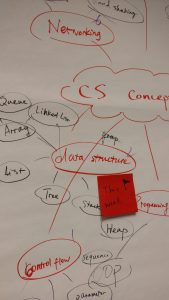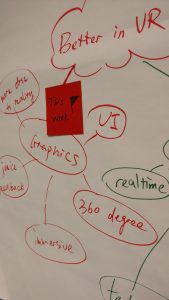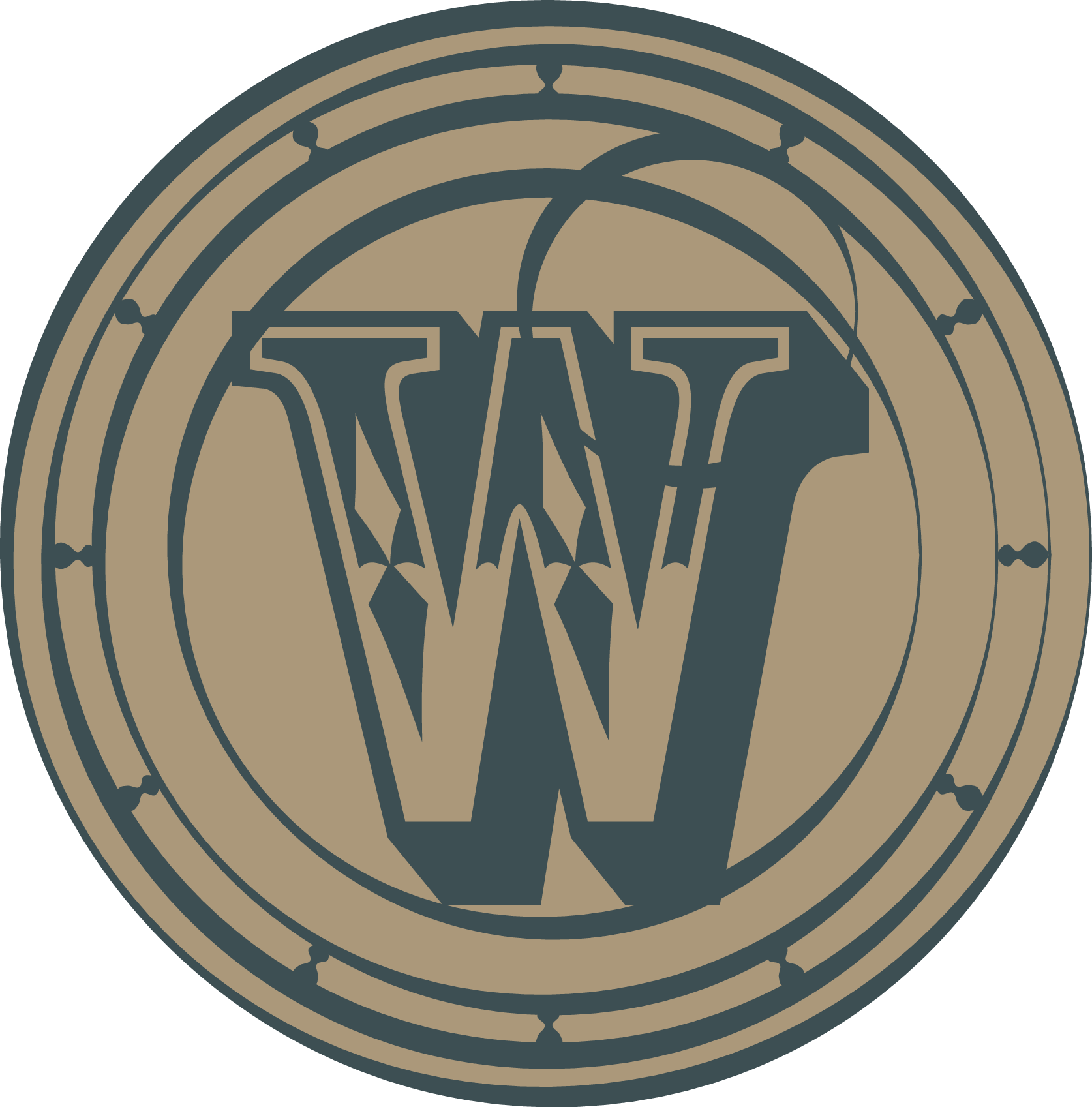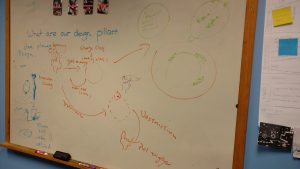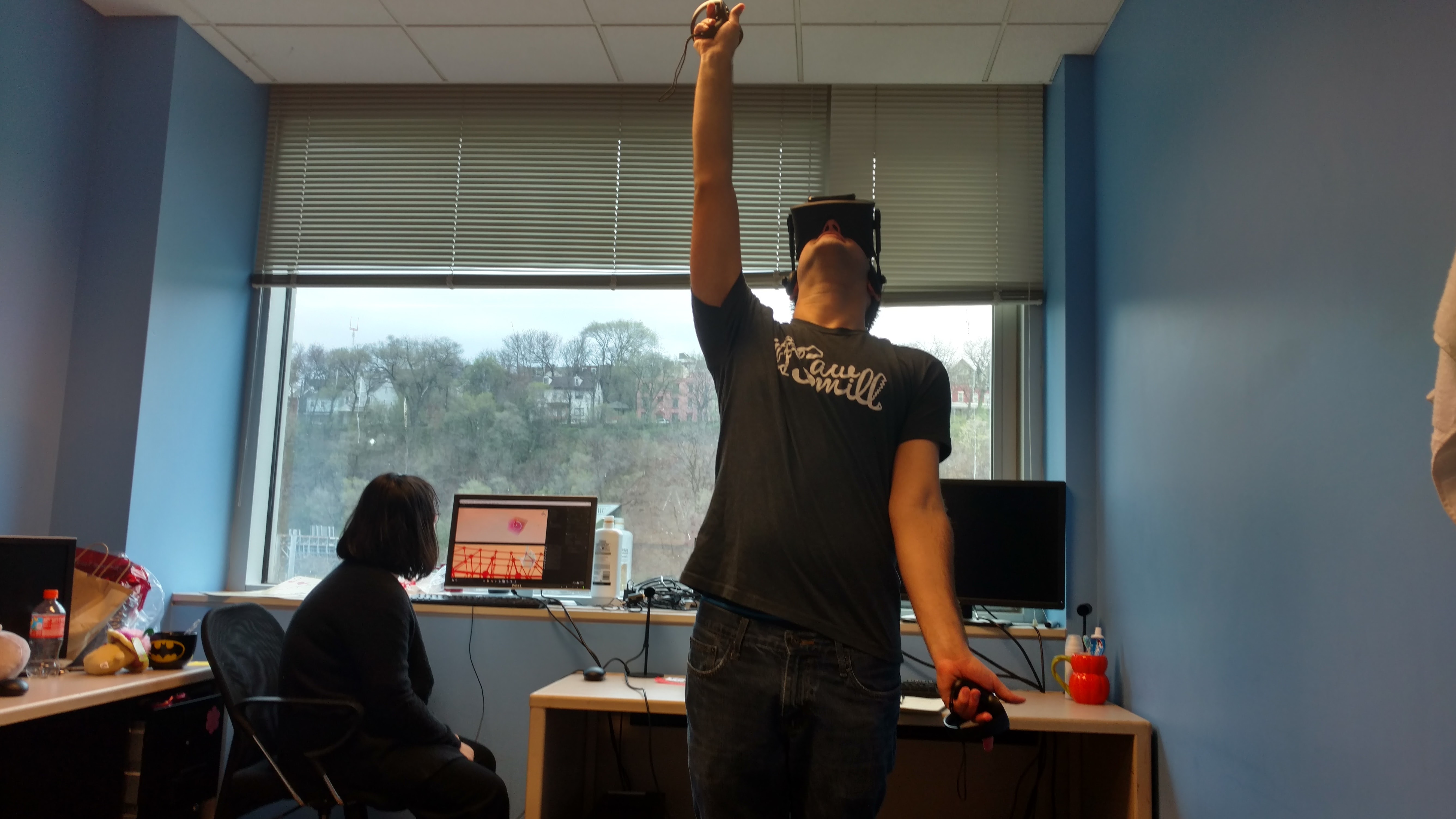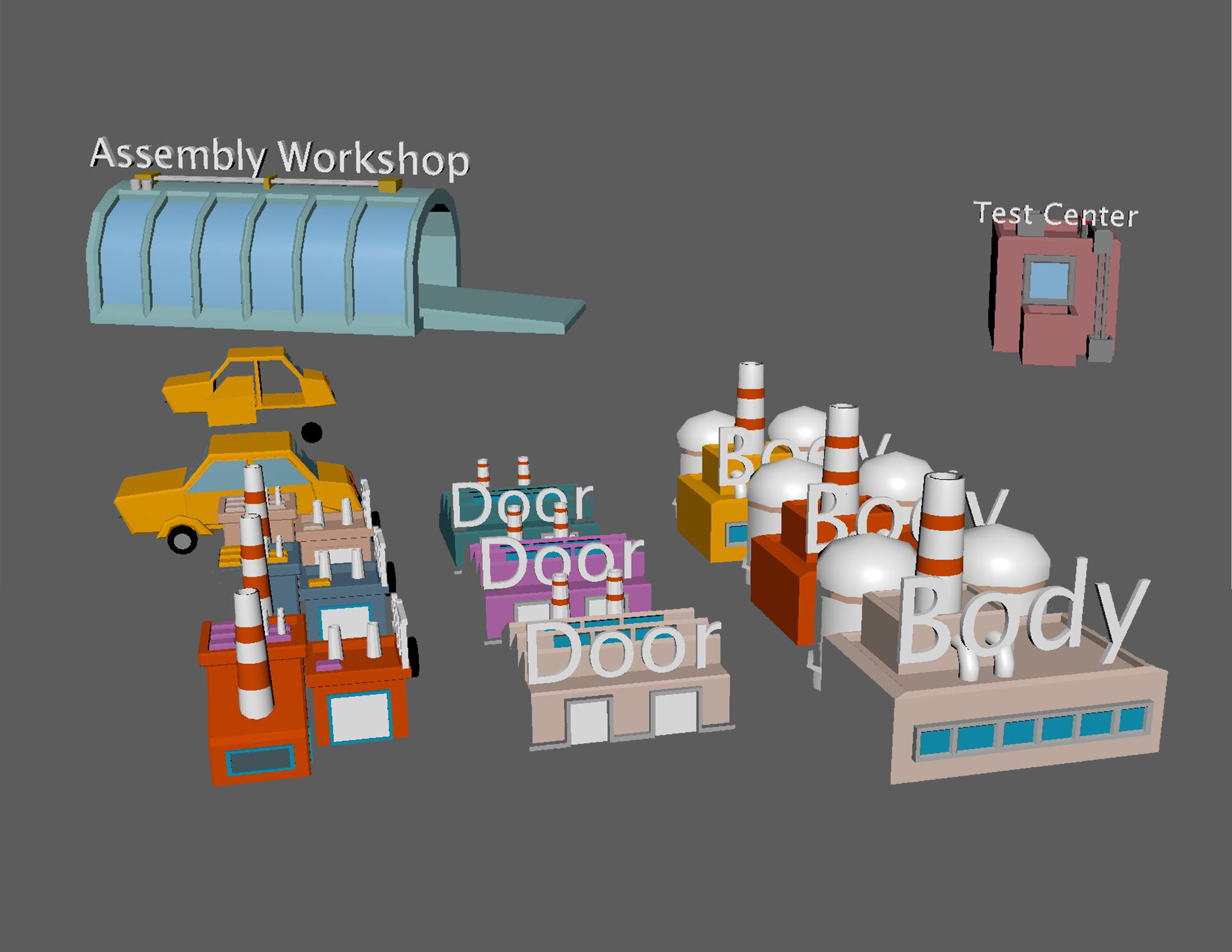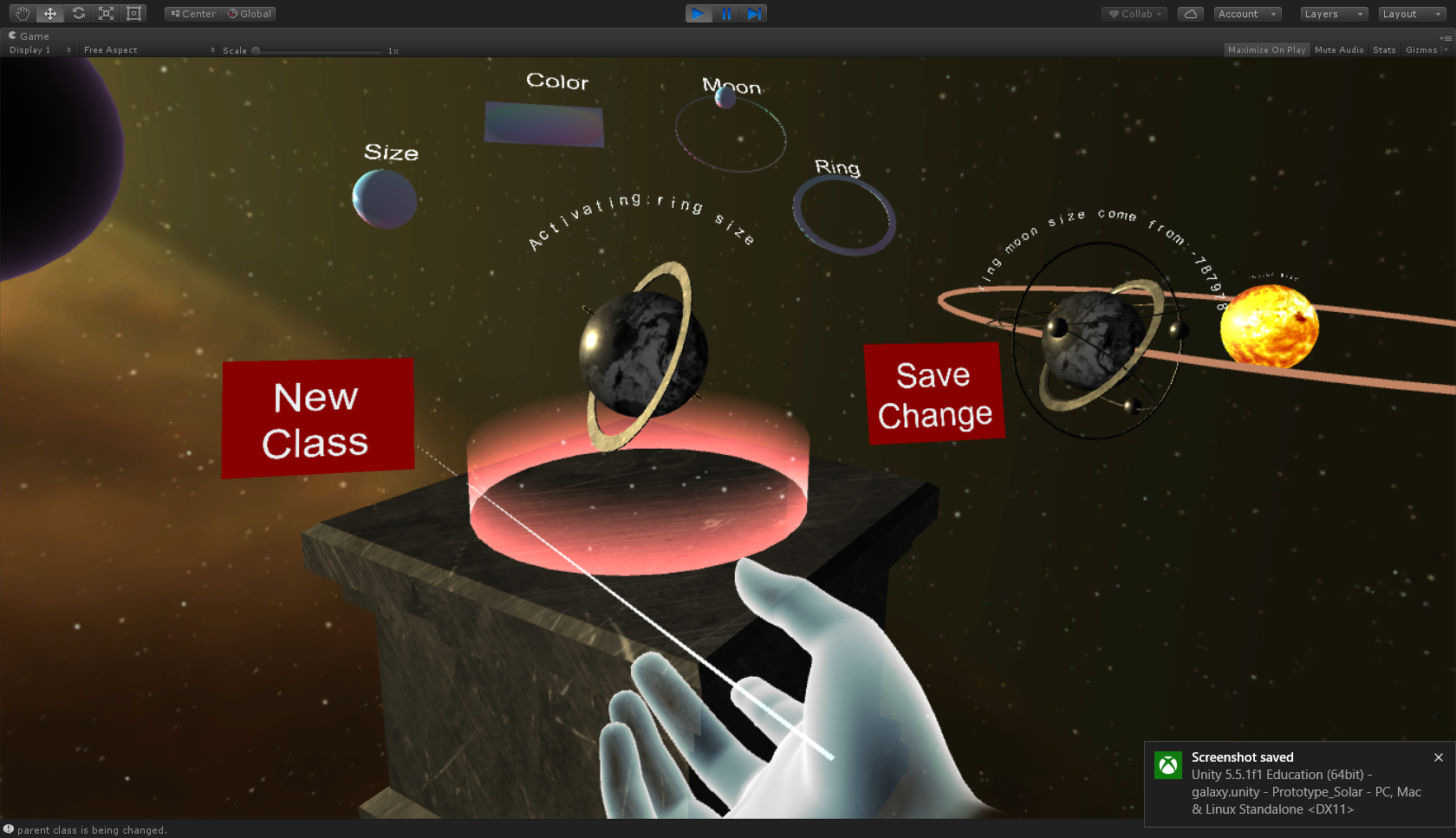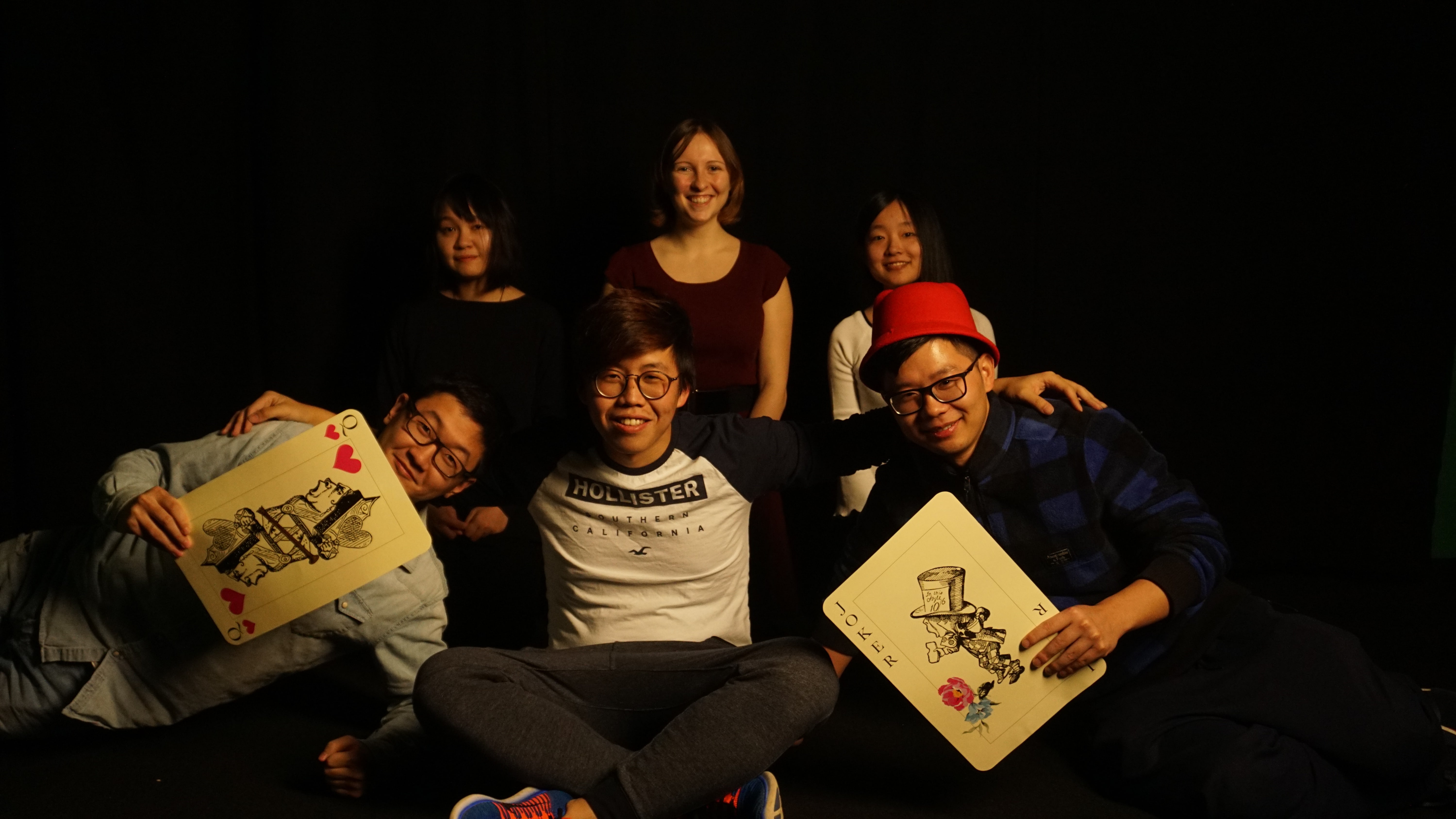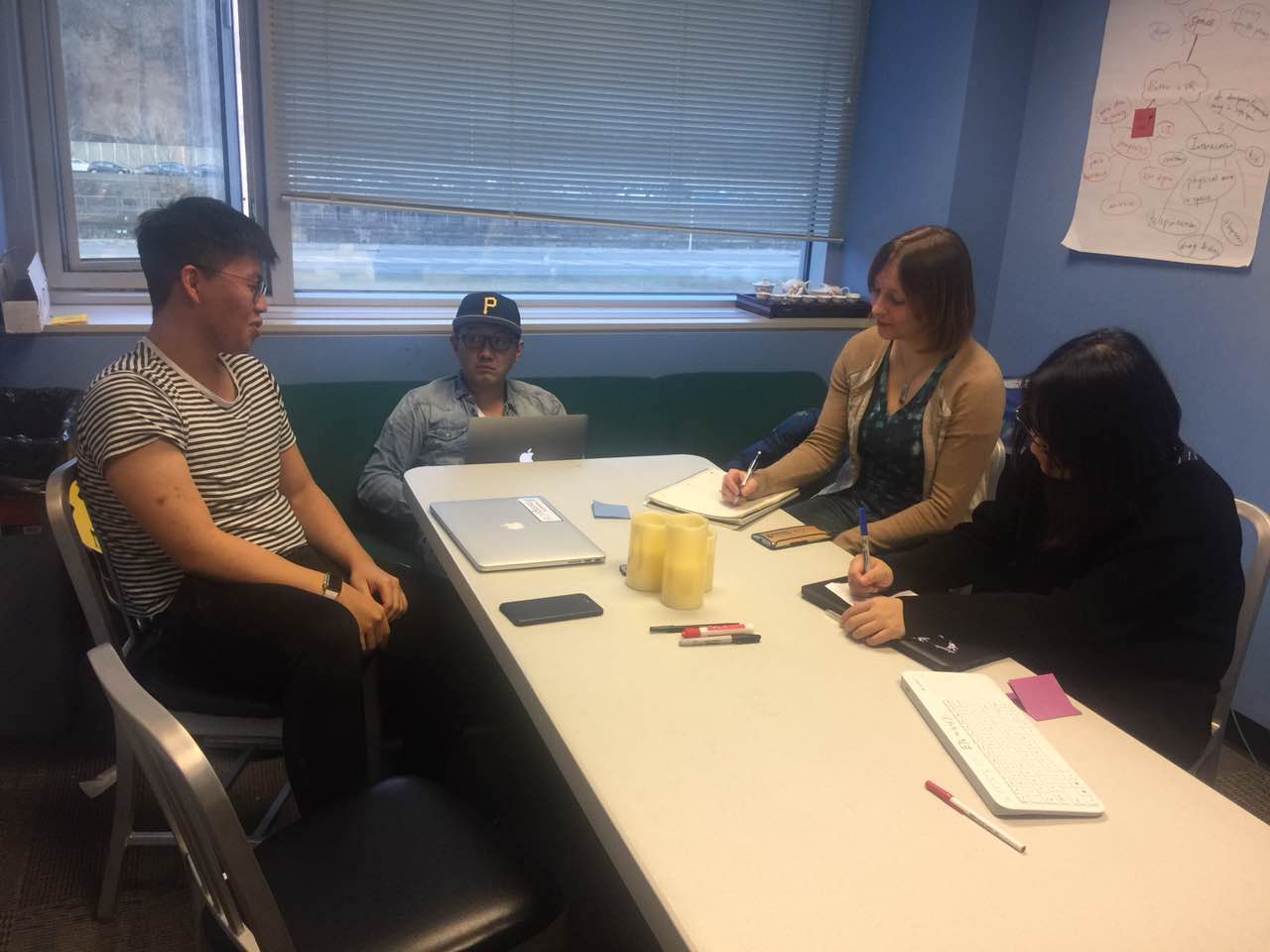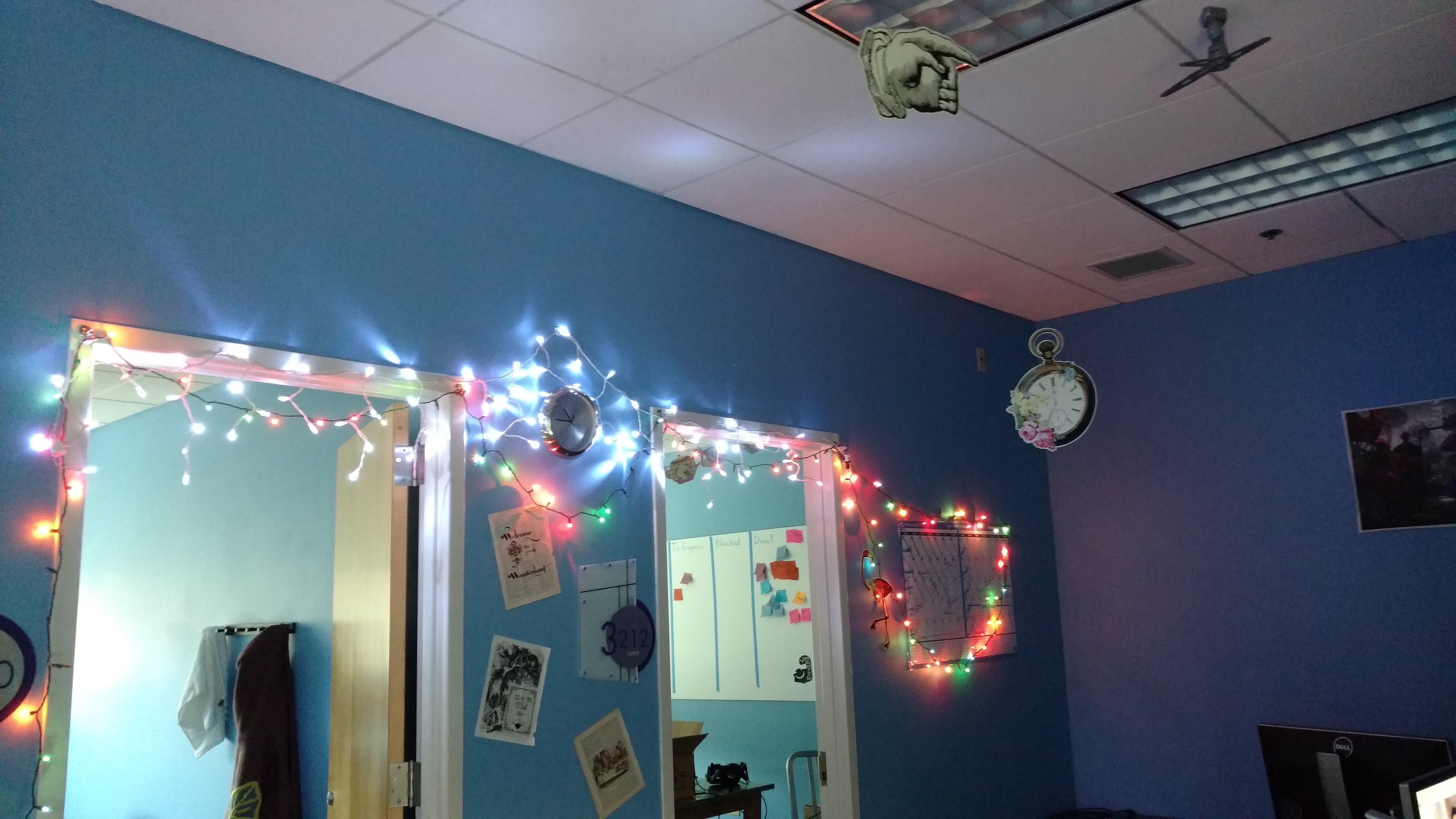This was the first week that we really split up and worked on substantially different tasks. We started development on our solar system prototype as well as preparing new pitches for our client and reaching out to computer science instructors. We also finalized our branding materials based on feedback we received early in the week.
Development
This week we started prototyping on solar system idea. The process was smooth and everyone contributed the final idea of how the prototype should look like. We got started with a git repository so that everyone can contribute, and split the work between Miriam, Nick, Joe and Luna.
Miriam worked on clarifying the design and making sure everyone had the information they needed to get working. She and Nick started compiling design documents detailing the interactions and guest experience of the prototype. Nick also got the technology up and running, including helping to find and import the appropriate software and setting up the git repository.
Joe spent the week researching Oculus Touch, as it is a fairly new interface that none of us have worked with before. He started developing several gestures that are recognizable by Oculus touch for us to use in the solar system prototype as well as helping to develop ideas for pitching.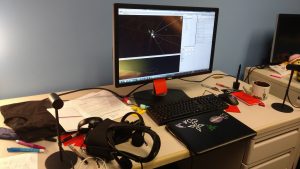
Luna found planet and solar system models we could use for the prototype and got an initial user interface working. After testing with the skybox and simple environment set-ups, we have some interesting discoveries. First, because Oculus cv1 has headphones of high quality, audio feedback will add a lot to the experience even if it is only white noise. Also, we decided to use a curved user interface that fits the planet’s shape and transforms with it because in the virtual reality environment a 2D overlay user interface can make the user feel disconnected from the experience. Instead, treating the user interface as an ‘object’ in the world is more natural. In addition, Luna decided to represent feedback using shaders and possibly particles in 3D space in future iterations to enhance the feeling of space and the objects.
By Friday, we had some basic interactions done but it is still far from complete. We’ll spend next week improving and expanding it.
Reaching Out
In addition to starting development on our first prototype, we also started reaching out computer science instructors for advice and to arrange for playtesting. Miriam got in contact with several computer science professors here at Carnegie Mellon to talk about what they think the most challenging parts of learning computer science are. She also started the process of reaching out to local middle and high school teachers to invite them to test our prototypes and give us their feedback.
Pitching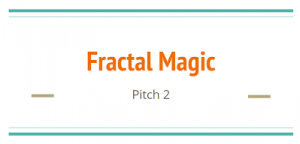
Jiawen and Zach focused on pitching this week. The computer science topic was analyzing, designing, testing, and debugging, so she started out researching how those ideas are typically taught. She had trouble finding techniques that would work well in virtual reality, so she also researched some teaching methods for recursion. Using that information, she came up with presentations for two ideas that she pitched to the rest of the team. Zach also developed two ideas that he pitched to the team, one of which we decided not to move forward with and the other we decided to combine with one of Jiawen’s pitches. Once we had selected the ideas to pitch, Zach, Jiawen, and Nick worked on refining and polishing the pitches before presenting them to our client.
Our client gave us a lot of useful feedback on the ideas and on the pitching process. After the meeting, we decided to move forward with the idea of using a spell-builder to help people understand functions and the idea of functions calling other functions. There are a lot of details that we know we need to discuss and refine further, but we think that the basic idea has enough merit to be worth exploring.
Onward
Next week Miriam, Joe, and Luna will continue developing the solar system prototype while Nick, Jiawen, and Zach begin work on the functions prototype. Nick and Miriam will also work on new ideas to pitch based on next weeks topics: graphics and data structures.
Next week is also Quarters, when faulty will visit each project team and give feedback and advice based on how the teams are doing. We’re looking forward to hearing what they have to say!
